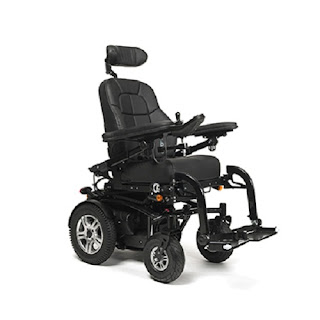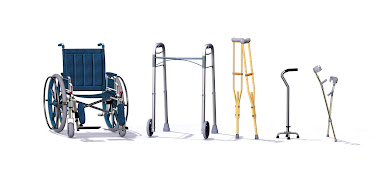How to Properly Adjust and Use a Walking Frame for Seniors?
Walking frames play a crucial role in enhancing the mobility and independence of seniors. These assistive devices provide stability and support, allowing seniors to move around with confidence and safety.
In this blog post, we will explore the ins and outs of walking frames NZ, including how to choose the right one for your needs, properly adjust it, and use it safely. By correctly understanding the importance of using a walking frame, seniors can enjoy improved mobility and an enhanced quality of life.
Understanding Walking Frames
Walking frames, also known as walkers or Zimmer frames, are assistive devices designed to provide stability and support for seniors with difficulty walking independently. They are typically made of lightweight materials, such as aluminium or steel, and feature four legs for maximum stability. The primary purpose of a walking frame is to enhance balance and strength, enabling seniors to maintain an upright posture and move confidently. Using a walking frame, seniors can regain their independence and engage in daily activities without fearing falling or losing their balance.
The benefits of using a walking frame are numerous. Firstly, it improves stability, reducing the risk of falls and injuries. Secondly, it increases confidence and promotes independence by allowing seniors to walk with support. Thirdly, it provides a secure and reliable mobility means, enabling seniors to stay active and engaged daily. Overall, walking frames NZ is essential for seniors who may have mobility issues but still want to maintain independence.
Choosing the Right Walking Frame
When choosing a walking frame, it is essential to consider various factors to ensure the best fit and functionality. Several types of walking frames are available, including standard walkers, wheeled walkers, and rollers. Each type serves a specific purpose, so it is crucial to consult with healthcare professionals to determine the most suitable option for individual needs.
Standard walkers are the most basic type of walking frame. They consist of a metal frame with four legs and do not have wheels. Standard walkers provide excellent stability, making them ideal for seniors who require maximum support. They are also suitable for indoor use, compact and easy to manoeuvre in tight spaces.
On the other hand, wheeled walkers are equipped with two front wheels and two back legs with rubber tips. These walkers offer increased manoeuvrability and are ideal for seniors with more mobility but still require support. The wheels allow for more straightforward navigation on smooth surfaces, making them suitable for indoor and outdoor use.
Rollators are walking frames with four wheels and a built-in seat. These walkers are designed for seniors who need a balance between support and mobility. Rollators provide stability while offering the convenience of a seat, allowing seniors to take breaks when needed. They are suitable for indoor and outdoor use, and the wheels make moving effortless.
When selecting a walking frame, it is crucial to consider factors such as height adjustment, weight capacity, stability, and manoeuvrability. The frame's height should be adjustable to ensure proper posture and alignment. The weight capacity should be sufficient to support the user's weight comfortably. Stability is crucial, and the frame should be sturdy and robust. Lastly, manoeuvrability is essential, especially for outdoor use, where the frame should have wheels that can handle various terrains.
Consulting with healthcare professionals, such as physiotherapists or occupational therapists, is highly recommended when choosing a walking frame. They can provide expert advice and guidance based on individual needs and capabilities.
Adjusting the Walking Frame
Proper adjustment of the walking frame is essential to ensure optimal comfort and functionality. Here are step-by-step instructions on how to adjust the height of the walking frame:
1. Stand up straight with your arms relaxed at your sides.
2. The top of the walking frame should align with the crease inside your wrist.
3. Ensure that your elbows are slightly bent when gripping the handles of the walking frame.
4. To adjust the height, locate the adjustment buttons or knobs on the legs of the frame.
5. Press the buttons or turn the knobs to unlock the height adjustment mechanism.
6. Slide the legs up or down until the desired height is achieved.
7. Ensure all legs are adjusted to the same height for proper alignment and stability.
8. Once the desired height is achieved, lock the adjustment mechanism securely to prevent accidental changes.
In addition to adjusting the overall height of the walking frame, it is essential to find the right handle height for comfortable use. This can be done by changing the individual handles separately. Grip the handles firmly and ensure that your elbows are slightly bent. If the handles are too low or too high, adjust them accordingly to maintain the correct posture and alignment.
Conclusion
Properly adjusting and using a walking frame is essential for seniors to enhance mobility and independence. By understanding the different types of walking frames NZ available, choosing the right one for individual needs, adjusting it correctly, and using it safely, seniors can enjoy the benefits of improved stability and confidence. It is crucial to consult with healthcare professionals and follow the guidelines provided to ensure the best fit and functionality of the walking frame. So, if you or your loved ones are considering using a walking frame, take the time to find the right one and learn how to use it properly. With the proper knowledge and guidance, seniors can continue to live an active and independent lifestyle.
Source : How to Properly Adjust and Use a Walking Frame for Seniors?




Comments
Post a Comment